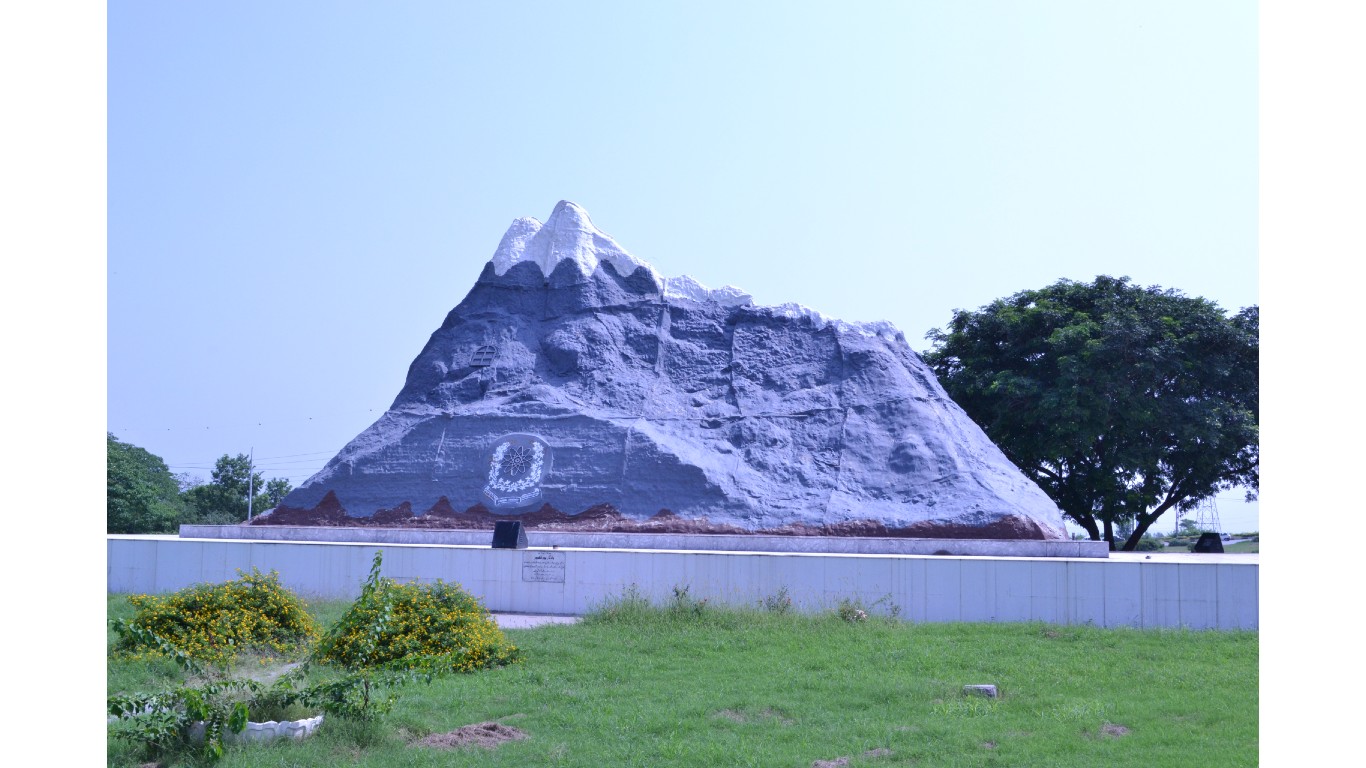
Over 75 years ago, the U.S. conducted the first ever nuclear weapons test. Ever since, nations have raced to design and develop these incredibly powerful bombs. While these are impressive scientific feats, they have also created an incredibly dangerous and complex geo-political situation. (These are the countries that control the world’s nuclear weapons.)
Eight different countries have carried out just over 2,000 nuclear tests throughout history. While each of these tests was a significant moment in human history, a handful stand out as especially impactful. Some represented enormous leaps forward in scientific capabilities, while others demonstrated that more countries were capable of creating nuclear weapons.
To compile a list of milestone nuclear weapons tests, 24/7 Wall St. reviewed the histories of nuclear weapons development from sources such as the Comprehensive Nuclear-Test-Ban Treaty Organization, the Atomic Archive, the Nuclear Weapon Archive, and the U.S. Department of Energy.
Countries have tested nuclear weapons underground and underwater. They have dropped bombs from planes and from space. These weapons have used different detonation processes, though all successful tests resulted in blasts with the equivalent power of anywhere from hundreds of thousands to tens of millions of tons of TNT. These are the most powerful nuclear weapons ever built.
The bulk of nuclear weapons testing came during the Cold War, primarily the 1960s and 1970s. Testing all but stopped by the end of the 1990s following a series of moratoria from nuclear nations, but North Korea has carried out several tests in recent decades, making it the only country to try out nuclear weapons in the 21st century.
Click here to see 15 historic nuclear tests since 1950
1. Trinity
> Date: July 16, 1945
> Country: USA
> Location: Alamogordo, New Mexico
The U.S. conducted the first ever nuclear test on July 16, 1945 in Alamogordo, New Mexico. Code-named “Trinity,” American scientists dropped the plutonium implosion device from a 100-foot tower. It released 18.6 kilotons of power upon detonation. This successful test was the beginning of the Atomic Age and proved that nuclear weapons were viable and incredibly powerful. The U.S. would drop two nuclear bombs on Japan within a month.
[in-text-ad]
2. RDS-1
> Date: Aug. 29, 1949
> Country: USSR
> Location: Semipalatinsk, Kazakhstan
Four years after the U.S. became the first nation to test a nuclear bomb, the Soviet Union proved it had similar capabilities. RDS-1 was the code name for the first Soviet nuclear weapon, which was tested in August of 1949 in modern-day Kazakhstan. The bomb had a yield of 22 kilotons.
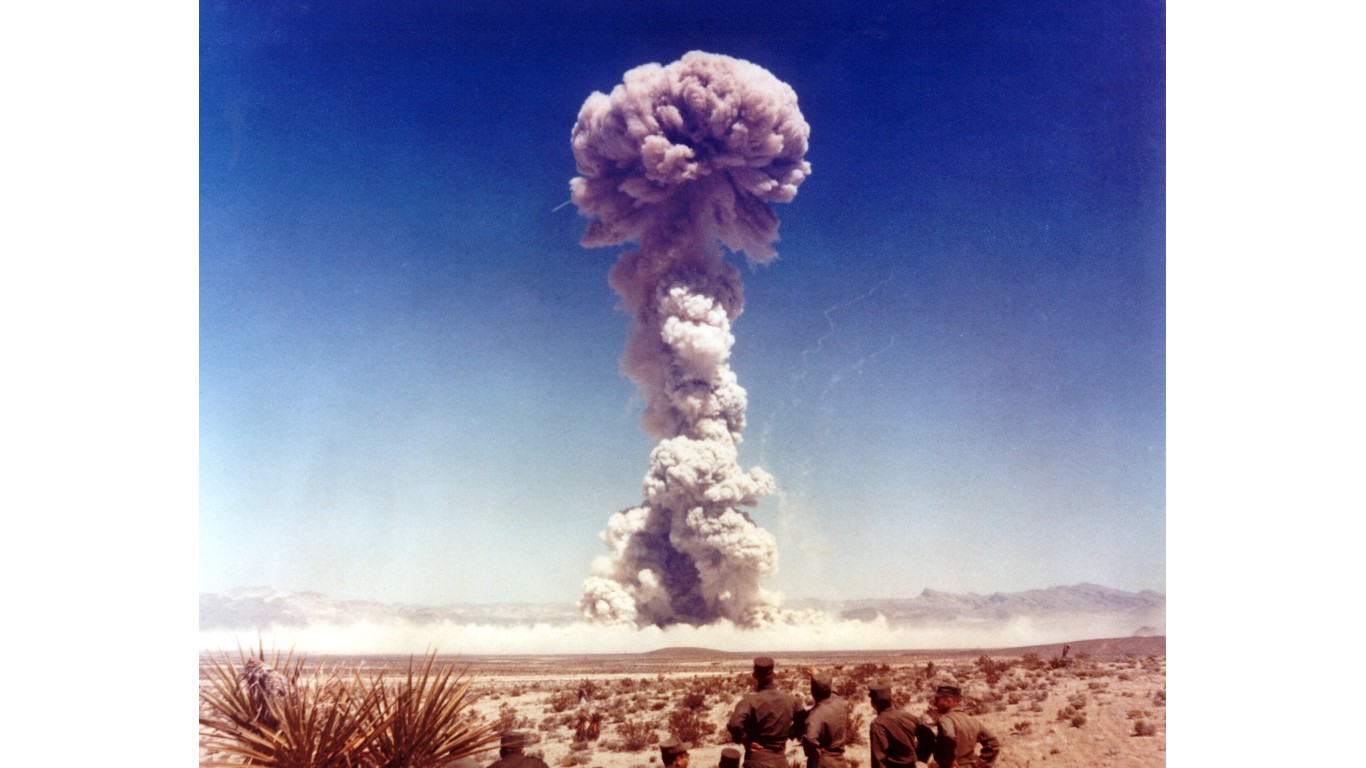
3. Operation Jangle
> Date: Nov. 29, 1951
> Country: USA
> Location: Nevada Test Site
There were only a handful of nuclear tests in the 1940s, but by the 1950s, the U.S. and the Soviet Union had drastically increased the rate of nuclear weapons testing. To learn more about how these weapons function, the U.S. enacted Operation Jangle – the first underground nuclear test.
Previous bombs were dropped from planes or towers, but scientists wanted to see what would happen if the bomb was detonated in a pit. After Operation Jangle, sub-surface detonations became the norm for nuclear testing for safety and secrecy reasons. More than 1,500 of the 2,059 total nuclear tests have been conducted underground.

4. Hurricane
> Date: Oct. 3, 1952
> Country: UK
> Location: Montebello Islands, Australia
After the U.S. and the U.S.S.R, the U.K. became the third nation to develop nuclear weapons. The U.K. had its first successful test on Oct. 3, 1952, when it executed the operation code named “Hurricane.” The bomb was in development for about five years and was similar to the “Fat Man” bomb the U.S. dropped on Nagasaki. The test took place at the Montebello Islands in Western Australia.
[in-text-ad-2]

5. Operation Mike
> Date: Nov. 1, 1952
> Country: USA
> Location: Enewetak atoll, Marshall Islands
A decade after first starting its nuclear weapons program, the U.S. unveiled a new type of nuclear weapon – a hydrogen bomb. Code named Operation Mike, the hydrogen bomb was more than 500 times as powerful as the first nuclear weapon the U.S. tested in 1945.
The first atomic bombs used just fission explosions, but thermonuclear weapons such as hydrogen bombs use fission explosions to set off a fusion reaction of heavy hydrogen isotopes. More energy is released during the fusion reaction stage, creating bigger blasts. The first hydrogen bomb, detonated at the Enewetak atoll in the Marshall Islands, created a cloud roughly 100 miles wide and 25 miles high.
6. Gerboise Bleue
> Date: Feb. 13, 1960
> Country: France
> Location: Reggane, Algeria
France became the fourth nation with nuclear weapons in February 1960, when it successfully tested a bomb in the Algerian desert. Code named “Gerboise Bleue,” named after native desert rats, the bomb had a yield of 70 kilotons – particularly high for a country’s first ever nuclear device.
[in-text-ad]

7. K Project
> Date: Oct. 27, 1961
> Country: USSR
> Location: Near Kapustin Yar, Russia
After nations had tested nuclear weapons dropped from planes, on the ground, and underground, the Soviet Union tested its first nuclear weapon in space in October 1961. Soviet scientists launched missiles from Kapustin Yar in Russia toward Saryshagan in modern-day Kazakhstan up to a maximum altitude of over 300 miles, in a series of high-altitude tests.
8. Tsar Bomba
> Date: Oct. 31, 1961
> Country: USSR
> Location: Arctic Ocean, near Russia
The Soviet Union dropped by far the most powerful nuclear bomb in history in 1961. Known as the Tsar Bomba, the weapon was 26 feet long and weighed almost 60,000 pounds. The bomb’s yield was 50 megatons – over 1,500 times more powerful than the two nuclear bombs the U.S. dropped on Japan. It produced a mushroom cloud 60 miles wide and 40 miles high, and caused destruction in a 150-mile radius. The test of the Tsar Bomba was so alarming to the U.S. and its allies. It likely contributed to the agreement of the Partial Nuclear Test Ban Treaty that the U.S., U.K., and U.S.S.R. all signed two years later.

9. 596
> Date: Oct. 16, 1964
> Country: China
> Location: Lop Nur, China
China proved it was nuclear capable in 1964, when it detonated an implosion device on Oct. 16 near Lop Nur in the western part of the country. The country had broken off diplomatic relations with the Soviet Union in 1959, but the Soviets had helped China’s development of nuclear weapons enough that the country had been able to complete project “596.” The uranium bomb had a yield of 22 kilotons.
[in-text-ad-2]
10. Smiling Buddha
> Date: May 18, 1974
> Country: India
> Location: Thar Desert, India
India’s first nuclear test was code named “Smiling Buddha,” and took place on May 18, 1974. Prior to the test, Canada supplied the country with the means to create a nuclear reactor. India claimed the blast was intended to be a “peaceful nuclear explosion,” but Canada cut off support for the country following the blast. India would not test another nuclear device for over two decades.
11. Final Soviet test
> Date: Oct. 24, 1990
> Country: USSR
> Location: Novaya Zemlya archipelago, Russia
As tensions cooled and the relationship improved between the U.S. and the U.S.S.R. in the late 1980s, nuclear testing began to slow down as well. The final test from the Soviet Union was on Oct. 24, 1990. Just before the dissolution of the Soviet Union in 1991, the nation proposed a moratorium on all nuclear testing, which was made more permanent when both nations signed the Comprehensive Test Ban Treaty.
[in-text-ad]

12. Divider
> Date: Sept. 23, 1992
> Country: USA
> Location: Nevada Test Site
The test code named “Divider” that took place on Sept. 23, 1992 ended up being the final U.S. nuclear test. American scientists carried out an underground detonation of a 20-kiloton nuclear bomb at the Nevada National Security Site in the desert.
Following the test, President George H.W. Bush signed a bill starting a nuclear testing moratorium. In 1996, the U.S. signed a treaty that would ban all nuclear detonations. However, the U.S. and several other nations like Israel, Iran, and China have yet to ratify the deal.
13. Chagai-I
> Date: May 28, 1998
> Country: Pakistan
> Location: Ras Koh Hills, Pakistan
Pakistan and India have long been geopolitical adversaries, and following Pakistan’s defeat in the Indo-Pakistan War of 1971, the country decided to develop its own nuclear weapons. Pakistan finally tese its weapons in May 1998, shortly after India conducted more tests of its own nuclear weapons just a few weeks earlier. Pakistan had a string of six tests from May 28-30 in 1998. Once it became clear that both nations had nuclear weapons, India and Pakistan agreed to a testing moratorium and neither have performed any tests since.

14. First North Korean test
> Date: Oct. 9, 2006
> Country: North Korea
> Location: Punggye-ri test site, North Korea
North Korea became the first country to conduct a nuclear weapons test in the 21st century, when the rogue nation tested its nuclear capabilities in October 2006. Monitoring sites from other stations picked up seismic activity and detected radioactivity, proving that North Korea did, in fact, test a nuclear explosion.
Previously, all other nuclear nations had agreed not to test weapons either through the de-facto moratorium through the 1996 Comprehensive Nuclear-Test-Ban Treaty (which has yet to be ratified) or following India and Pakistan’s moratorium after their respective 1998 tests.
[in-text-ad-2]
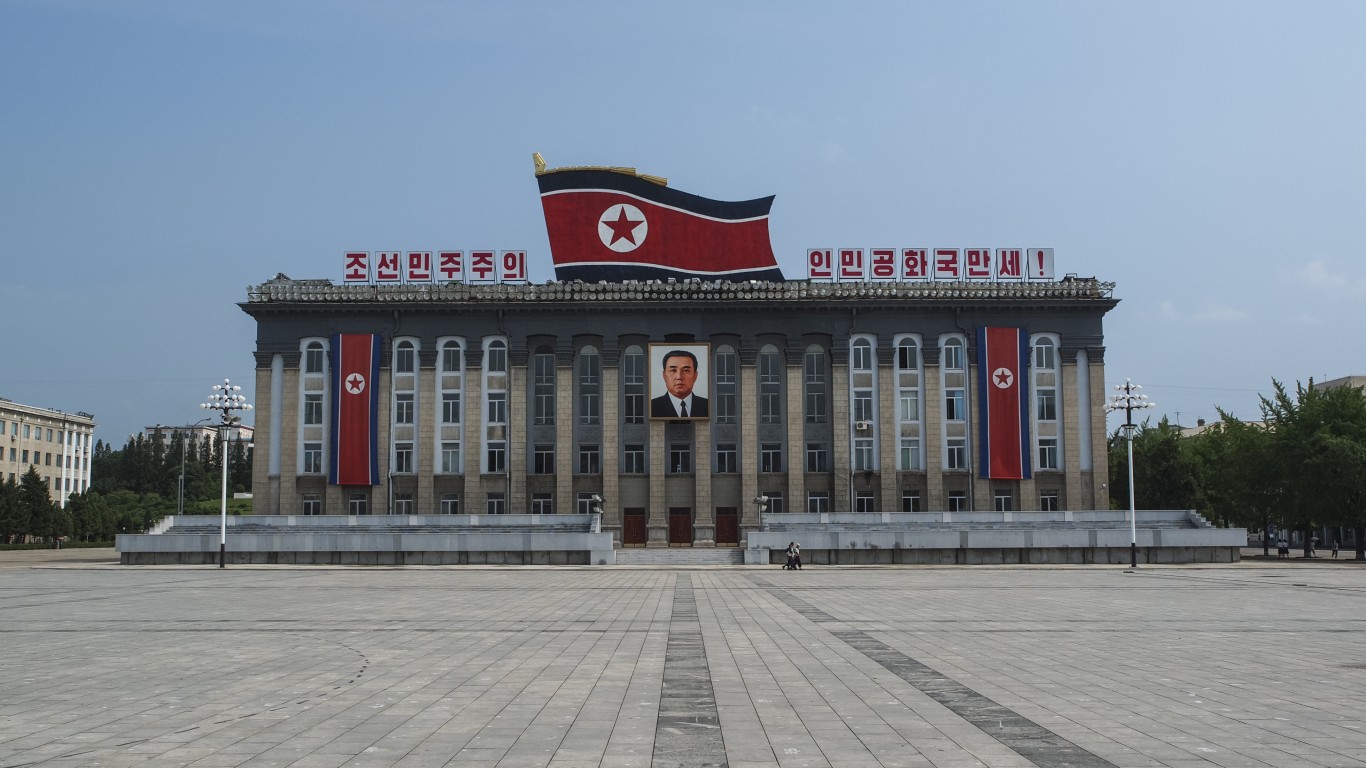
15. Most recent nuclear test
> Date: Sept. 3, 2017
> Country: North Korea
> Location: Punggye-ri test site, North Korea
The most recent nuclear test in the world was in 2017, when North Korea detonated its sixth nuclear device in the span of 11 years. The 2017 test is believed to be the most powerful nuclear weapon North Korea has tested, with an estimated yield of 160 kilotons.
Though it has not tested a nuclear bomb since, North Korea has tested several intercontinental ballistic missiles – most recently in mid-May 2022. The U.S. military and intelligence agencies also believe North Korea is preparing to resume nuclear testing at an underground facility. Though its capabilities are still in doubt, North Korea is attempting to create a weapon that could potentially have a range to strike a target anywhere in the world. ld.
The Average American Has No Idea How Much Money You Can Make Today (Sponsor)
The last few years made people forget how much banks and CD’s can pay. Meanwhile, interest rates have spiked and many can afford to pay you much more, but most are keeping yields low and hoping you won’t notice.
But there is good news. To win qualified customers, some accounts are paying almost 10x the national average! That’s an incredible way to keep your money safe and earn more at the same time. Our top pick for high yield savings accounts includes other benefits as well. You can earn up to 3.80% with a Checking & Savings Account today Sign up and get up to $300 with direct deposit. No account fees. FDIC Insured.
Click here to see how much more you could be earning on your savings today. It takes just a few minutes to open an account to make your money work for you.
Our top pick for high yield savings accounts includes other benefits as well. You can earn up to 4.00% with a Checking & Savings Account from Sofi. Sign up and get up to $300 with direct deposit. No account fees. FDIC Insured.
Thank you for reading! Have some feedback for us?
Contact the 24/7 Wall St. editorial team.
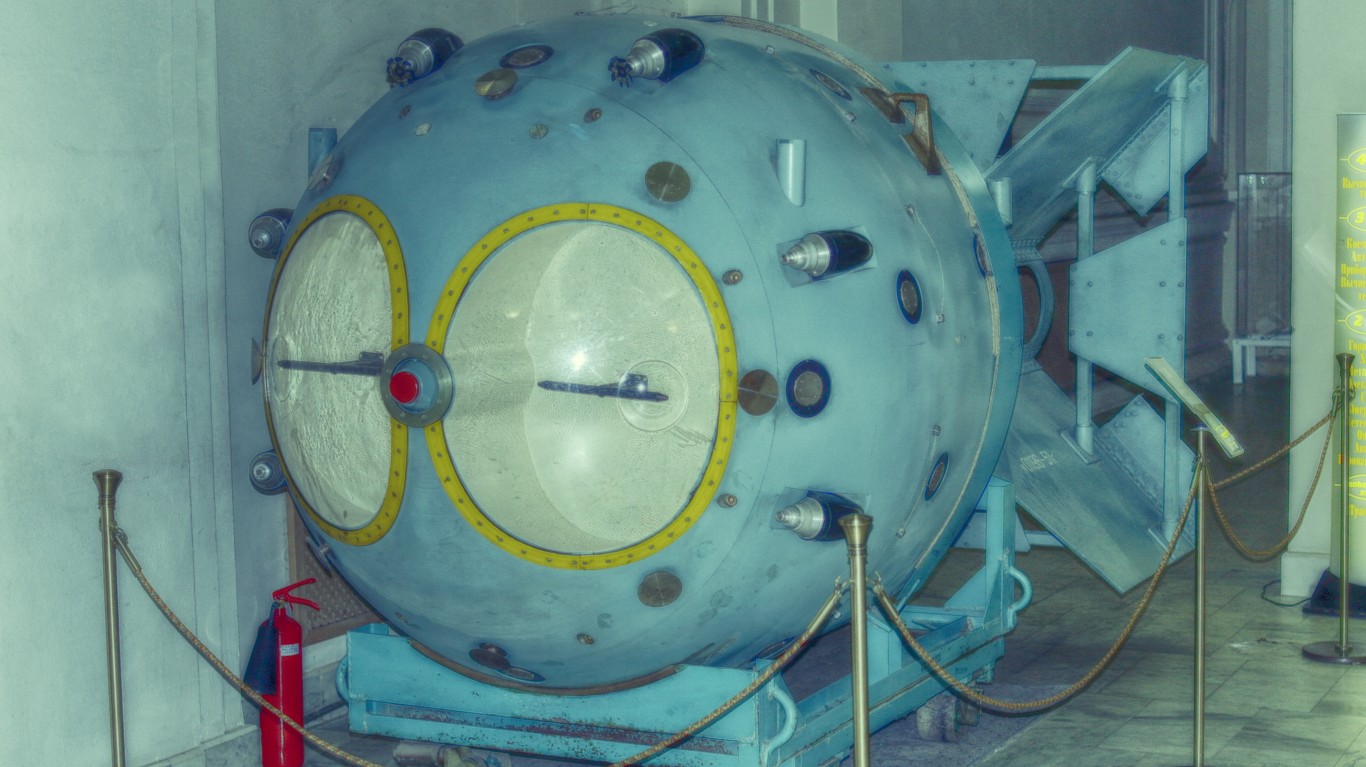
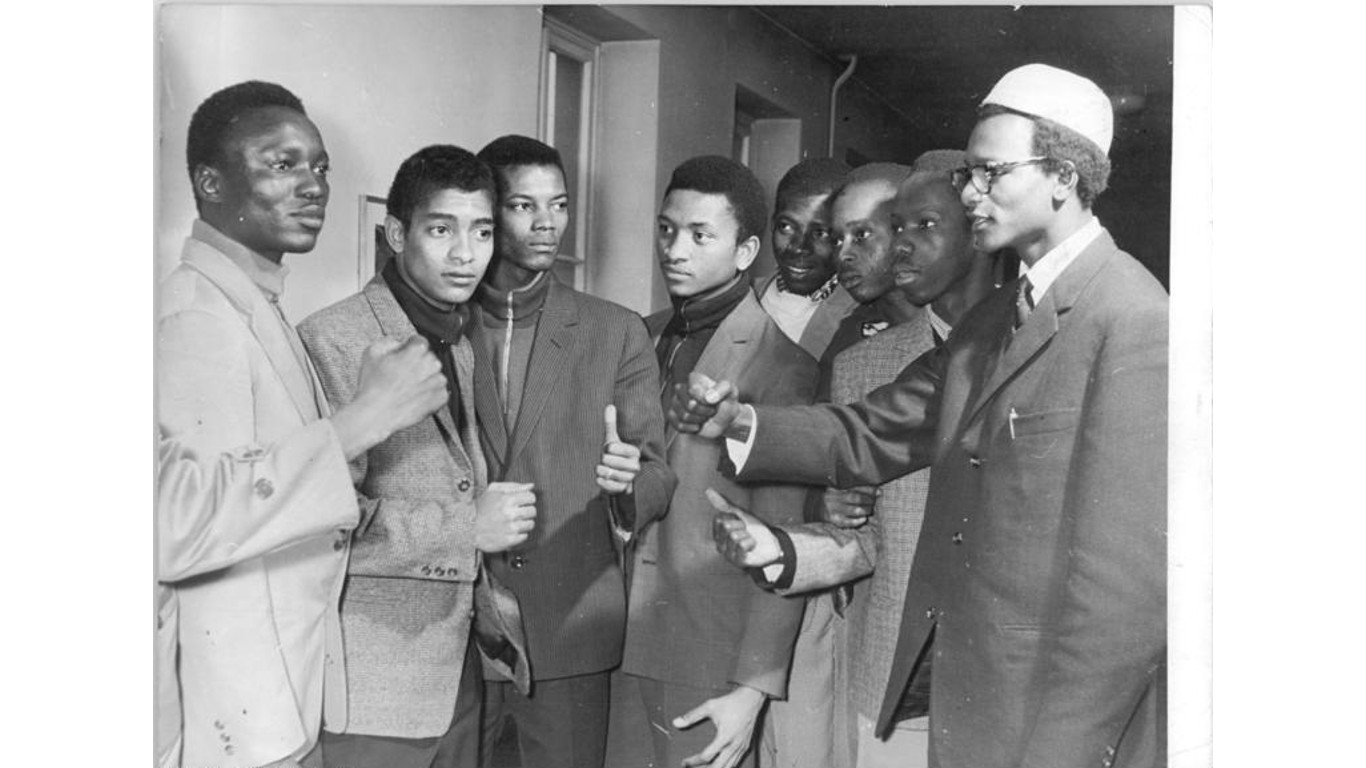
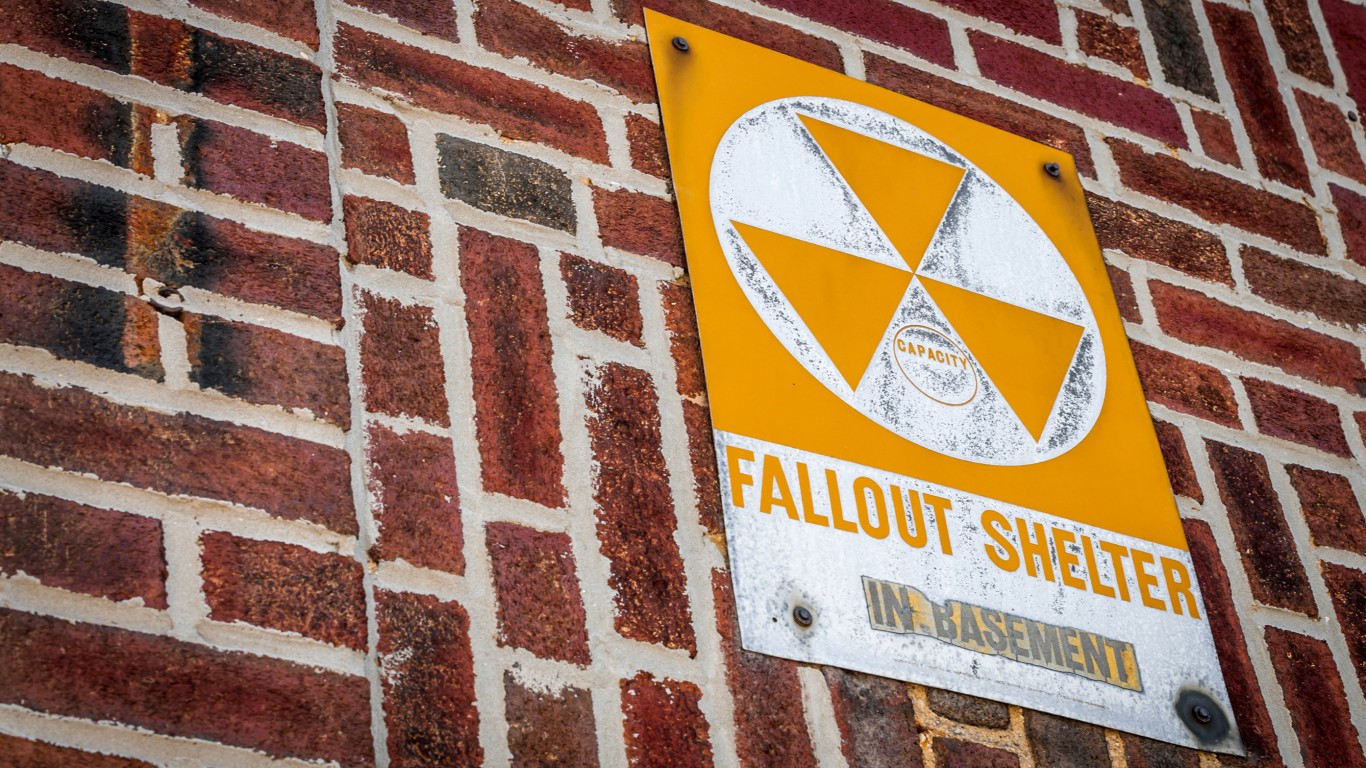 24/7 Wall St.
24/7 Wall St.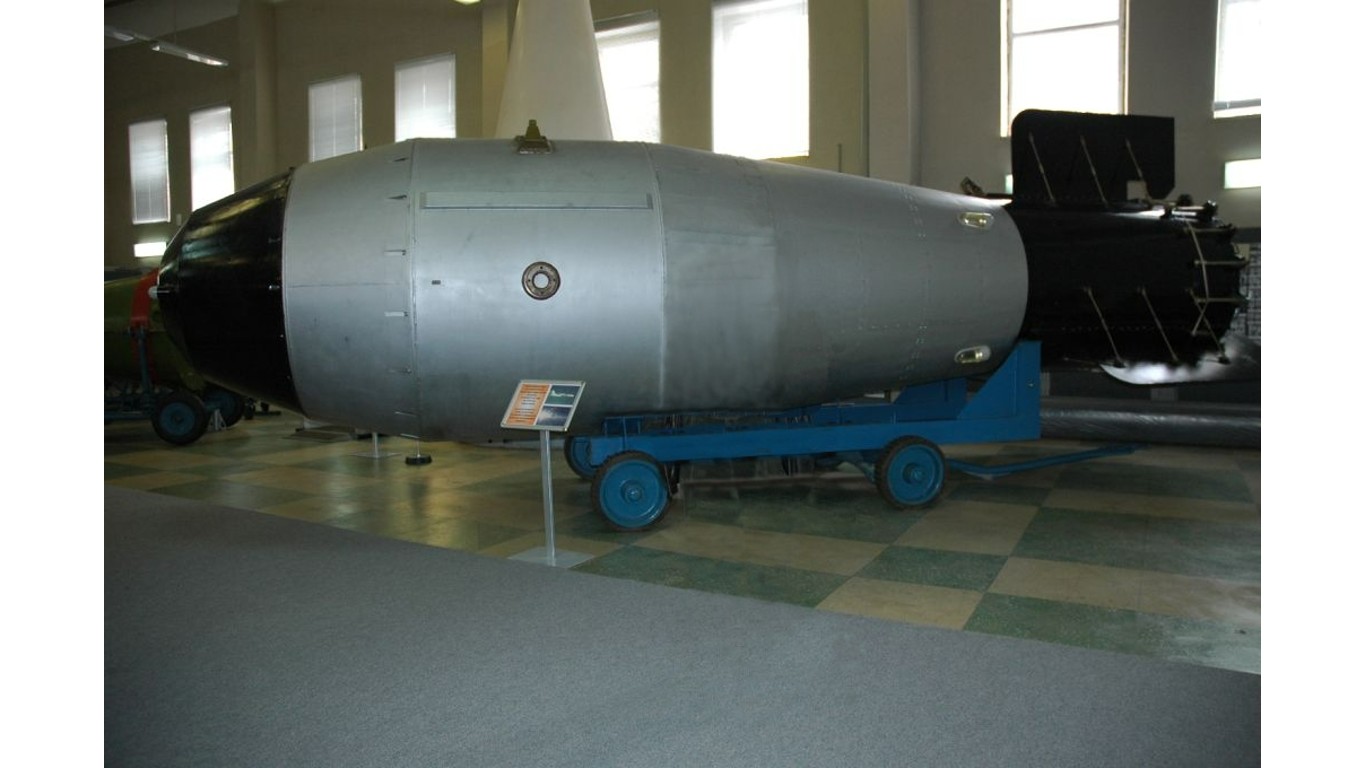
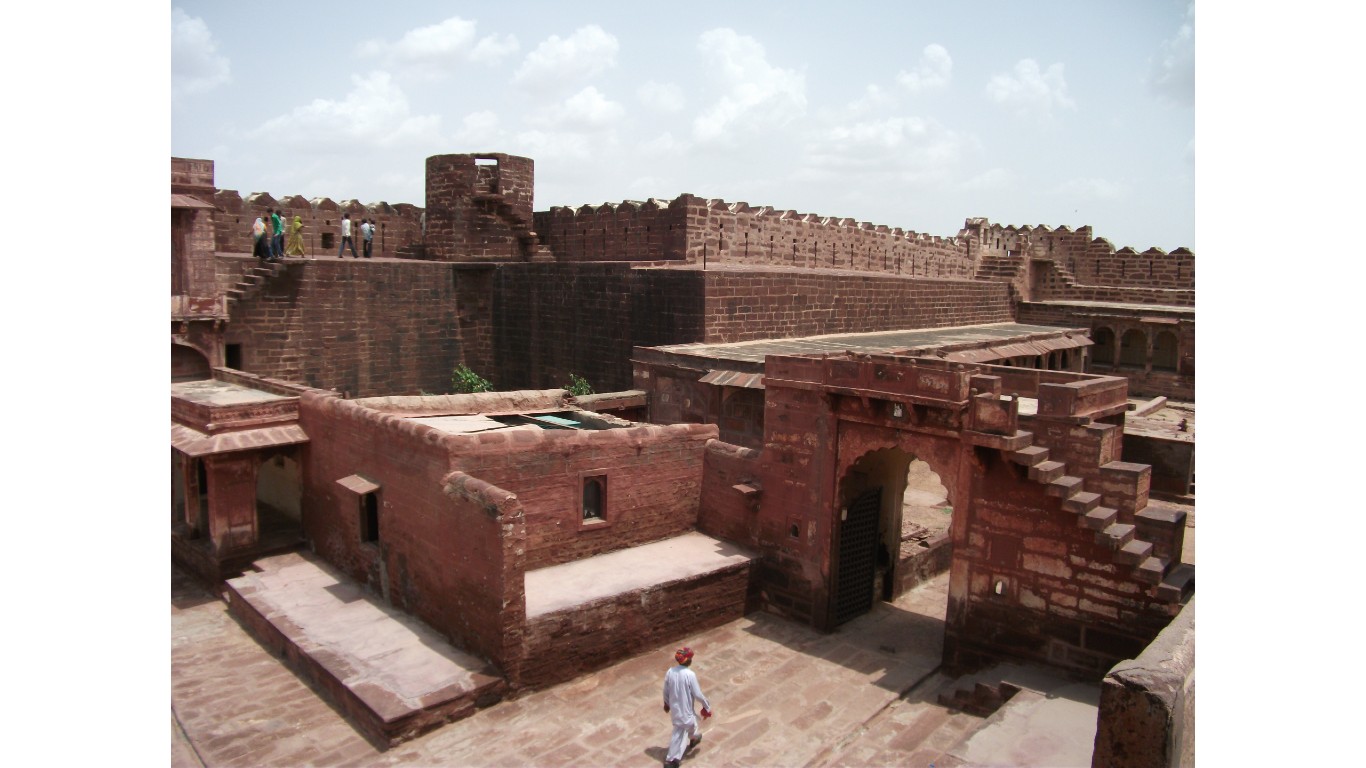
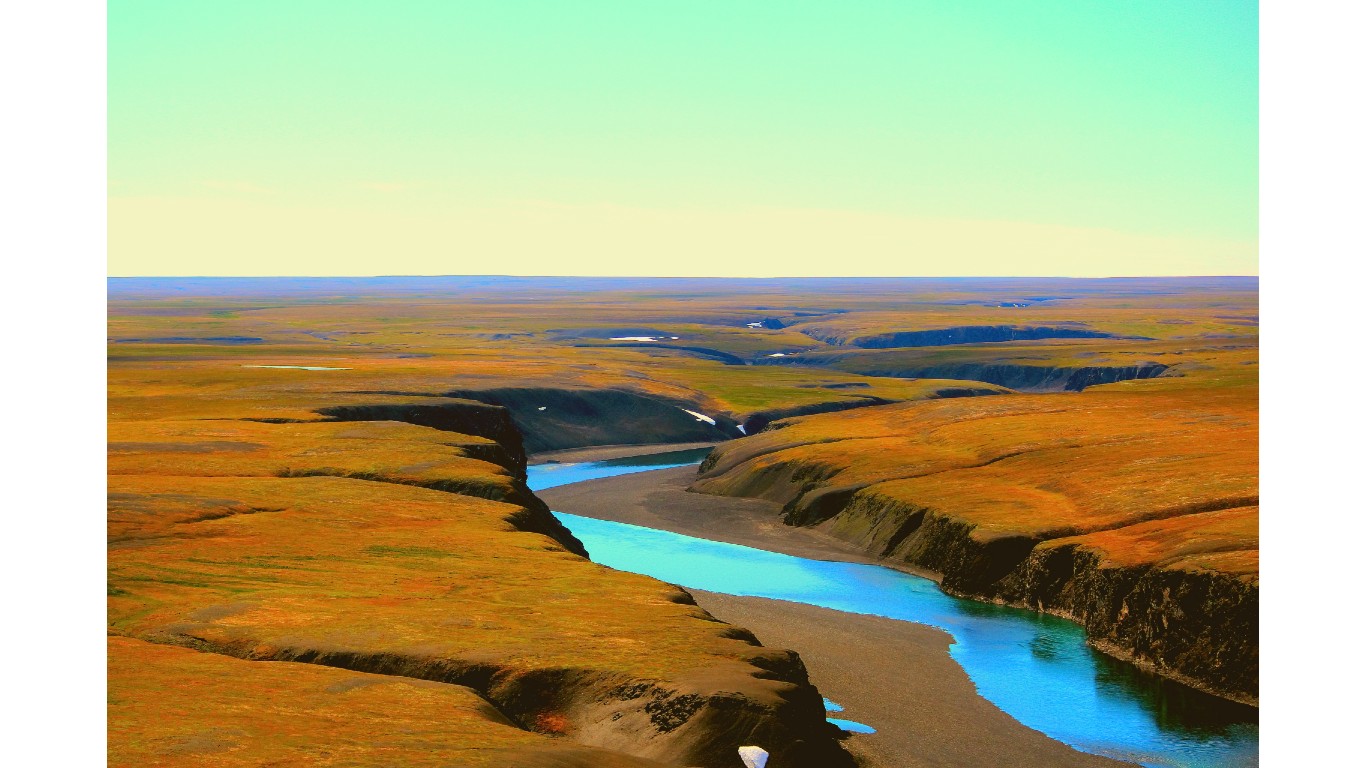
 24/7 Wall St.
24/7 Wall St.